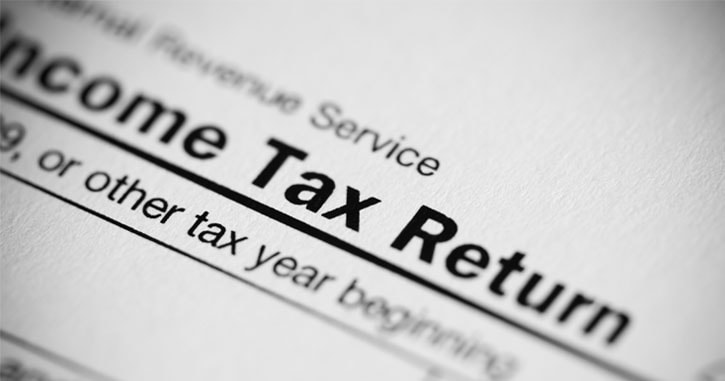What to Do If Your Identity Is Stolen: 14 Steps

After you’ve received calls from collections agencies and discovered multiple credit cards and bank accounts have been opened in your name, the reality hits you: Your identity has been stolen. If you become a victim of identity theft, you should take immediate action.
Identity theft can happen to you even if you’re careful
But what’s the first thing you need to do? To start, a fraudster could have several pieces of your personally identifiable information (PII). This is unique, sensitive information like your Social Security number that can enable someone to commit more than one type of fraud in your name.
You’re likely wondering how your PII was stolen. It’s important to remember that even if you’ve been diligent in trying to keep your personal information private, cybercrimes like the Equifax data breach show your information can still be vulnerable various ways. Take the case of three men in Florida who were sentenced in 2017 for conspiracy and aggravated identity theft. The ID theft occurred when one of the defendants worked at a pediatrician’s practice and stole the PII of patients, their parents and guardians, more than 13,000 people in all.
In this article, we’ll share 14 steps you can take to help stop an identity thief from continuing to use your identity, along with additional recovery actions you can take, depending on the type of identity fraud you may have experienced.
Fair Credit Reporting Act: What to do about identity theft
If you discover you’re a victim of ID theft, you have specific rights under the Fair Credit Reporting Act (FCRA). These rights include:
- Placing fraud alerts with the three major U.S. credit reporting agencies (CRAs), also commonly known as the credit bureaus.
- Getting copies of your credit reports from the three CRAs.
- Placing a security freeze on your credit report.
- Obtaining documents related to fraudulent transactions or accounts opened using your personal information.
- Obtaining information from debt collectors.
- Blocking the reporting of damaging information to the CRAs so it doesn’t appear in your credit reports.
- Stopping businesses from reporting inaccurate information to the CRAs.
Plus, there are additional steps you can take to help ensure an identity thief isn’t continuing to use your identity.
- Contacting the companies and banks where you know identity fraud occurred.
- Reporting the identity theft to the Federal Trade Commission (FTC).
- Filing a report of the identity theft with local law enforcement.
- Contacting the IRS, if you suspect tax-related identity theft.
- Reaching out to your healthcare insurance and medical providers.
- Placing a flag on your driver’s license or state ID.
- Cleaning up your accounts.
What to do if your identity is stolen
If you’re the victim of identity theft, there are important steps you need to take to help stop an identity thief from continuing to commit fraud in your name, according to the FTC. Act fast.
1. Contact the companies and banks where you know identity fraud occurred.
Call the fraud department at the companies and financial institutions where you know the identity thief used your personal information. Part of this step may include closing or freezing your accounts that have been compromised.
2. Contact the credit reporting agencies and place fraud alerts.
You will need to contact at least one of the three major CRAs: Equifax, Experian or TransUnion. The agency you contact is required to contact the other two and share information. But you may want to reach out to each CRA individually to be sure they are on alert as soon as possible that you’ve been a victim of identity theft. The CRAs collect information about you and how you use credit, as well as whether any business has turned your debt over to a collections agency or you’ve filed for bankruptcy.
You’ll want to request a fraud alert, which will last one year. This will make it more challenging for someone to open new accounts using your identifying information. Once a fraud alert has been placed, a business must verify your ID before issuing credit to the person requesting it. You can apply for a fraud alert in all the ways listed below (phone, online, and mail).
If you’ve become a victim of identity theft, you also can request an extended fraud alert that lasts for seven years.
Equifax Alerts
800-525-6285
Equifax Consumer
Fraud Division
P.O. Box 105069
Atlanta, GA 30374
Experian Fraud Center
888-397-3742
Experian
P.O. Box 9554
Allen, TX 75013
TransUnion Fraud Alert
888-909-8872
TransUnion Fraud Victim
Assistance Department
P.O. Box 2000
Chester, PA 19016
3. Ask for copies of your credit reports.
After placing the initial fraud alert, you can request a free copy of your credit report from each credit reporting agency. It’s important to look at all three reports to help ensure you’re not missing anything important — because each agency’s report may be different. Review the reports carefully for transactions you don’t recognize and follow the steps below to remedy them.
An extended fraud alert allows you to receive two free credit reports from each of the credit bureaus within 12 months after you placed the alert.
4. Place a security freeze on your credit report.
If you know your identifying information has been stolen, you may want to place a security freeze on your credit report, which will prohibit a credit bureau from releasing any information in your credit report without your express approval. Because a security freeze prevents prospective creditors from accessing your credit file, this could provide an extra layer of protection by preventing a CRA from approving new credit, loans, or other services in your name without your authorization.
5. Obtain documents related to fraudulent transactions or accounts opened using your personal information.
You have the right to ask creditors or other businesses for copies of any applications or other records related to transactions or accounts connected to the use of your personal information for identity theft. You must ask for this in writing and may need to provide proof of your identity, a police report, and an FTC Identity Theft Report.
6. Obtain information from debt collectors.
You have the right to ask debt collectors for any information about debt incurred due to the identity theft.
7. Block the reporting of damaging information in credit reports.
You also have the right to ask CRAs to block any information in your file that is the result of identity theft. For example, an identity thief may make purchases in your name and never pay for them. If you don’t ask the credit bureaus to block this information, it will remain in your credit report.
8. Prevent businesses from reporting information resulting from identity theft.
When you reach out to companies where you know an identity thief used your identifying information, ask that they stop reporting the inaccurate information to the credit bureaus, as well as report the revised, correct information. You’ll need to identify what information you don’t want reported and provide a copy of your FTC Identity Theft Report.
9. Report ID theft to the FTC.
While you don’t need to report a stolen credit card to the FTC, you should report identity theft to the FTC right away. That way the FTC can create a report that you can use to prove the ID theft to businesses and financial institutions. To do this, you can fill out a report online or call 877-438-4338.
10. Reach out to local law enforcement.
The FTC says you may also want to alert your local police department. When you go to your local law enforcement office, bring a copy of your FTC Identity Theft Report, a government-issued photo ID, proof of your current address, and any proof that your identity has been used for identity theft — such as collections notices. Don’t forget to ask for a copy of the police report in case you need it.
You also can file an online complaint with the FBI’s Internet Crime Complaint Center, which gives victims of cybercrime a reporting mechanism that alerts authorities.
11. Contact the IRS.
Contact the IRS to make sure you aren’t the victim of tax-related identity theft. Someone with a combination of your name, date of birth, and Social Security number could file a tax return in your name, hoping to receive a fraudulent refund. And make sure you respond to any notices from the IRS that may alert you to fraudulent activity.
12. Alert your health insurance company and medical care providers.
While identity theft is more often associated with financial fraud, it also can infiltrate your medical care. Contact your medical care providers to make sure the identity thief hasn’t used your insurance information to receive healthcare services in your name. An identity thief who has your personal information could assume your identity when seeing a doctor, receiving prescription drugs, having surgery, or visiting an emergency room.
13. Reach out to your state’s DMV or licensing agency.
An identity thief could use your driver’s license or state ID number to impersonate you. They can use your driver’s license number on a check, during a traffic stop, or to make a fake license. If you lose your driver’s license or state ID, ask your state’s DMV or licensing agency to place a flag on your license number to help put law enforcement on notice.
14. Clean up all of your accounts.
You’ll also need to clean up things on a more basic level. Contact your phone and utility companies, and any other places where you have accounts. Make sure you’ve cancelled all fraudulent accounts and, if you need them, open new accounts — with new account numbers. Remember to create strong, complex passwords for each account.
Additional steps for identity theft recovery
After you’ve taken the steps outlined above, you’re on your way to responding to identity theft. But it doesn’t stop there. You’ll need a recovery plan to help resolve other negative effects and protect yourself going forward.
If an identity thief has sensitive personal information like your Social Security number, there are different types of ID theft they may commit. Depending on the type, you may need to take other steps such as contacting the Social Security Administration to report unauthorized use of your Social Security number, sorting through debt collector requests, or clearing your name of criminal charges.
As mentioned above, visiting the FTC’s identity theft website can provide more help in creating a comprehensive identity theft recovery plan.
Get LifeLock Identity Theft Protection 30 DAYS FREE*
Editor’s note: Our articles provide educational information. LifeLock offerings may not cover or protect against every type of crime, fraud, or threat we write about.
This article contains
Related articles
Start your protection,
enroll in minutes.
Copyright © 2025 Gen Digital Inc. All rights reserved. All trademarks, service marks, and tradenames (collectively, the "Marks") are trademarks or registered trademarks of Gen Digital Inc. or its affiliates ("Gen") or other respective owners that have granted Gen the right to use such Marks. For a list of Gen Marks please see GenDigital.com/trademarks.



